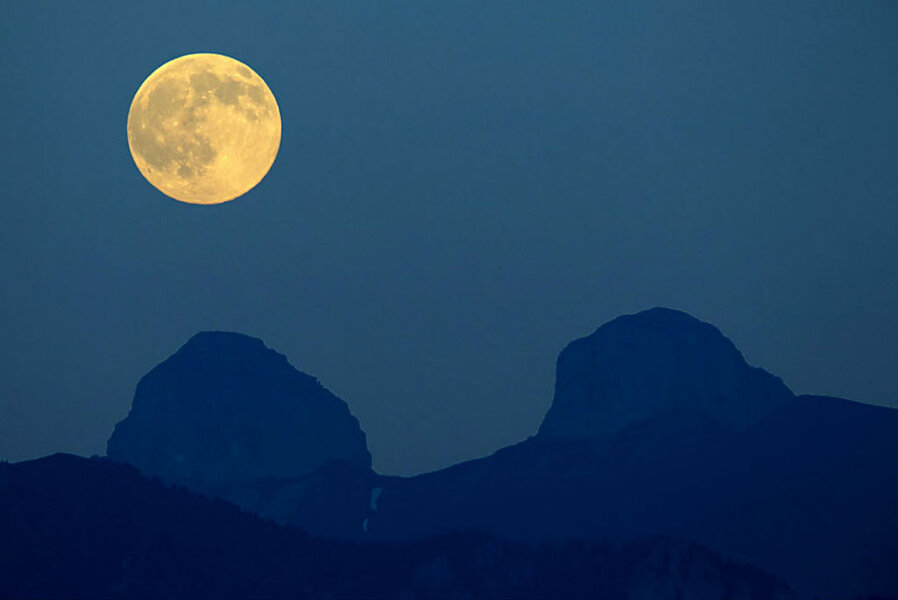'Blue moon': Where does that phrase come from?
Loading...
On Friday morning at 6:43 am EDT, astronomy enthusiasts can witness a lunar event that takes place only once in a blue moon: a blue moon.
By its modern definition, a blue moon is the second full moon in a calendar month, an astronomical phenomenon that occurs about once every 2.7 years. (The calendar year is 365.24 days long, while a lunar month is 29.53 days; that leaves about 11 extra days after a 12-moon cycle. Every three years or so, that adds up to an extra full moon in a calendar year.)
In the 1800s, the phrase “blue moon” referred to the fourth full moon in a three-month season, and the modern definition was introduced in 1946. But historians say the idiom has been around for roughly 500 years.
According to folklorist Phillip Hiscock, a professor at Memorial University in Newfoundland, the first recorded appearance of the phrase “blue moon” was in the 16th century writings of Cardinal Thomas Wolsey, Henry VIII’s advisor, who wrote that his intellectual enemies “would have you believe the moon is blue.”
At this time, the idea of a blue moon represented absurdity; an inconceivable event. By the 1700s, the phrase had evolved to mean “never.”
"It sort of slipped sideways from impossibility to a temporal notion of impossible in time," Dr. Hiscock explains in an interview with LiveScience.
The phrase appears again in an 1821 book about working-class London, in which one man is quoted as saying “I haven't seen you this blue moon.” A footnote explaining that “this is usually intended to imply a long time” suggests that the author, a member of the educated upper-class, had been unfamiliar with the phrase, but that it was commonly used street slang.
Experts believe that the phrase reached widespread popularity in the middle of the 19th century, evidenced by the use of “once in a blue moon” in several books without any explanatory footnotes.
The term made its first recorded appearance in America around that time in the Maine Farmers’ Almanac, which defined a “blue moon” as the third full moon in a three-month season that has four moons rather than the usual three, the Christian Science Monitor’s Husna Haq reports.
It’s unclear exactly why the almanac’s publishers used the phrase, but there are plenty of theories. One is that the third moon was traditionally referred to as “blue” in the Czech language; another is that the term’s origin lies in the French phrase meaning double moon, “la deux lune,” which more or less rhymes with "blue moon." Others believe that those rare moons were considered bad luck and therefore labeled blue.
And then, of course, there’s the simplest theory: that somebody decided to assign an astronomical meaning to the British phrase.
In a 1946 article in Sky and Telescope Magazine titled “Once in a Blue Moon,” journalist James Hugh Pruett incorrectly stated that a blue moon was the name given to the second full Moon that appeared in any given month. He was a little off, but the definition stuck nonetheless.
According to astronomer John P. Millis, Mr. Pruett’s definition is now "so widespread that it is not uncommon for books to use Pruett's definition over the correct one.”
The phrase has become popular with businesses and products in recent years, with countless restaurants and shops incorporating “Blue Moon” into their name.
“Over the past quarter-century this term has really captured the imagination of North America and beyond,” Hiscock says.
He attributes the term's popularity to its timelessness: “We grow up in cities and live lives that have nothing to do with the physical seasons or astronomical cycles, and when we hear things that connect us to those things we often become very excited.”






